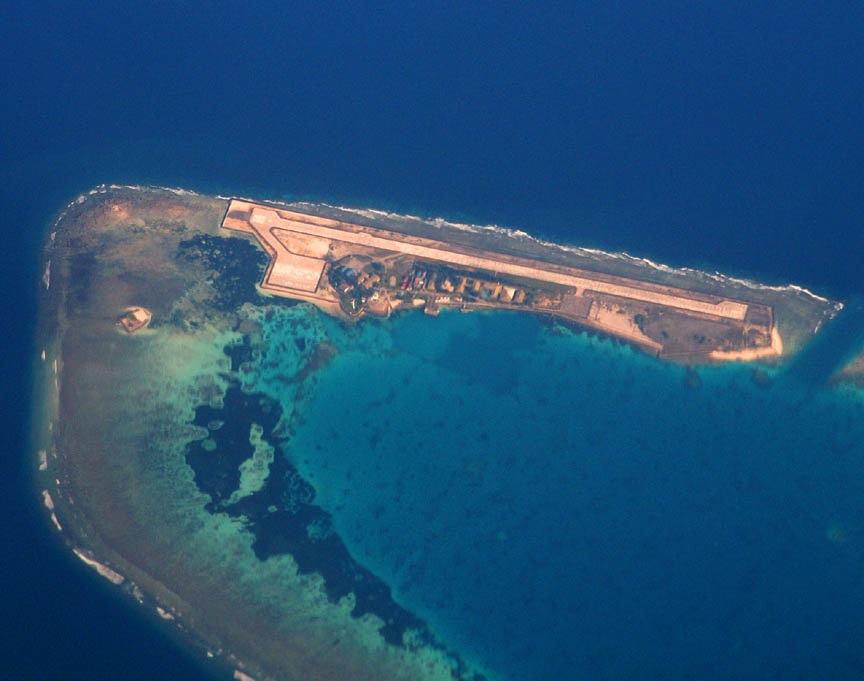The Peninsula
Did China Use North Korea as Smoke Screen for the South China Sea?

By Donald Manzullo
For several years, China has been claiming ownership of most of the South China Sea, using what it calls the “Nine Dash” line. The People’s Republic of China (PRC) claims it inherited this area from the Koumintang government, identified by nine dashes that outline and encompass 1.4 million square miles including several hundred reefs, atolls, and small islands — largely uninhabited and uninhabitable.
Ownership of these land masses is disputed. Taiwan, Vietnam and the PRC claim the Paracels. The PRC, Taiwan, Malaysia, Brunei, Philippines and Vietnam claim the Spratlys, and a 2016 ruling by the Permanent Court of Arbitration in The Hague held against the PRC and in favor of the Philippines. The Court described the South China Sea as a “crucial shipping lane, a rich fishing ground, home to a highly biodiverse coral reef ecosystem, and believed to hold substantial oil and gas resources.”
But China’s interest is more than what the Court just described: It’s the key to controlling international security of that part of the world. That’s why the PRC has constructed three airstrips on the Spratly Islands and placed anti-ship cruise missiles and surface-to-air missiles there.
Further, the PRC recently landed a heavy bomber on Woody Island in the Paracels. Jake Maxwell Watts and Eva Dou, writing in The Wall Street Journal, May 20, 2018 make this startling statement: “The landing was the latest in a series of military moves that China has carried out while global attention has been focused on the standoff with North Korea” (emphasis added).
But these actions have even broader security implications. Consider this statement in an article in Quartz Media written by Steve Mollman, with the headline, North Korea is helping China in the south China Sea—whether it knows it or not: “For Beijing, North Korea’s saber-rattling does serve one useful purpose: It distracts attention from the contested South China Sea….Thanks largely to North Korea, the issue has faded into the background – just as China might have hoped.”
Mollman cites an article in Foreign Affairs by Mira Rapp-Hooper and Charles Edel, Adrift in the South China Sea that demonstrates the U.S. does not have a dual tract in disarming North Korea and impeding China’s quest in the South China Sea: “Exactly why the South China Sea has fallen off the administration’s agenda is not clear. But it is possible that U.S. officials have decided to lift the pressure on China’s maritime outposts because they believe that doing so could help secure Beijing’s help in managing North Korea.”
Recently, however, the U.S. is showing a high level of interest in China’s expansion into the South China Sea, as reflected in Secretary of Defense Mattis statement at the 2018 Shangi-La Dialogue:
“Our Indo-Pacific strategy informs our relationship with China. We are aware China will face an array of challenges and opportunities in coming years. We are prepared to support China’s choices, if they promote long-term peace and prosperity for all in this dynamic region.
“Yet China’s policy in the South China Sea stands in stark contrast to the openness of our strategy….[I]t calls into question China’s broader goals. China’s militarization of artificial features in the South China Sea includes the deployment of anti-ship missiles, surface-to-air missiles, electronic jammers, and more recently, the landing of bomber aircraft at Woody Island.”
In response, Chinese Foreign Ministry spokesman Hua Chunying called Secretary Mattis’ remarks “ridiculous” and said it is the U.S. with its large number of ships that already has hegemony in the area.
These analyses leave several unanswered questions. Did the PRC not interfere with North Korea’s development of nuclear weapons so as to draw the world’s attention from China’s seizure of the South China Sea? Did China use North Korea as a smoke screen to divert attention from its illegal seizure of these land masses? Did China purposely set out to deflect attention from its South China Sea activities by making other countries give the PRC a pass so that China could put pressure on North Korea?
Now that China has greatly expanded its mission in the South China Sea, has its attention turned to North Korea with the ultimatum to make the best deal it can with the U.S. because China does not want a nuclear neighbor and 25 million refugees crossing its border from North Korea? Is China’s choking off trade with North Korea a message from China to North Korea that China will no longer tolerate North Korea’s nuclear program?
The U.S. will have to contend with the implications of China’s South China Sea strategy sooner than later. China may have played the best hand if North Korea gives up its nuclear weapons: It accomplished its goal in the South China Sea and neutered a nuclear neighbor.
Donald Manzullo is President and CEO of Korea Economic Institute and former Member of U.S. Congress (1993-2013). The views expressed here are the author’s alone.
Photo from Strom Crypt’s photostream on flickr Creative Commons.
